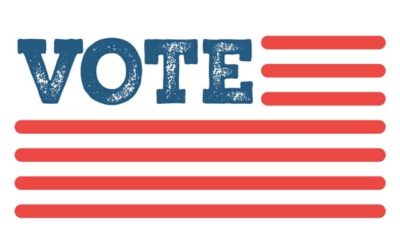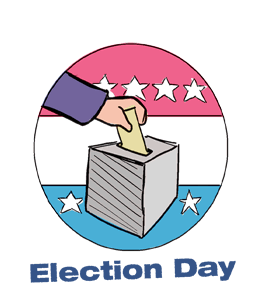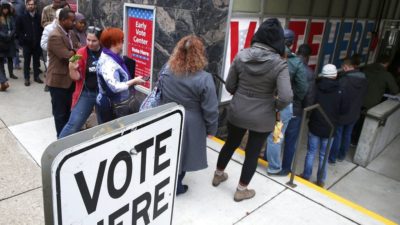
Searcy, AR (LP) —Election day is the most important part of the year. Everybody goes and votes to see who wins the election. Election day is Tuesday, November 3, 2020. Arkansas offers absentee ballots by mail to voters who will be unable to vote in person. All other voters are expected to vote in person. Arkansas offers early voting. Congressional elections determine who represents your state in Congress. They also decide which political party Democratic or Republican will hold a majority in each chamber of Congress for the next two years. Congressional elections occur every two years. Voters choose one-third of senators and every member of the House of Representatives. Midterm elections occur halfway between presidential elections. The congressional elections in November 2018 were “midterms.” Congressional elections use the popular vote to choose winners. They don’t use the Electoral College, which is used in presidential elections. Members of the U.S. House of Representatives serve two-year terms. All 435 members get elected every midterm and presidential election year. A representative must be at least 25, a U.S. citizen for at least seven years, and live in the state he or she represents.
Arkansas voters can also vote before Election Day. The early voting period runs from Monday, October 19, 2020 to Monday, November 2, 2020, but dates and hours may vary based on where you live. You will need to show ID to vote in Arkansas. Acceptable forms of ID include: an Arkansas driver’s license; an Arkansas photo identification card; a concealed handgun carry license; a United States passport; an employee badge or identification document issued by an accredited postsecondary education institution in the State of Arkansas; a United States military identification document; a public assistance identification card if the card shows a photograph of the person to whom the document or identification card was issued; a voter verification card. If you’re voting for the first-time in Arkansas, registered to vote by mail, and didn’t submit a copy of your ID when you registered, you will need to show ID to vote. Acceptable forms include: a driver’s license or non-driver’s license ID; or a current utility bill, bank statement, government check, paycheck, or other government document with your name and address. Voters without ID: If you are unable to provide ID, you will be able to vote a provisional ballot.
To set the record straight, the third Monday in February is a federal holiday, meaning that federal employees get the day off and federal offices are closed. Officially, the holiday is called Washington’s Birthday to honor the first American president George Washington. Mrs.Osburne says “There are many, many elected officials at local, state, and federal levels.” No, in federal elections in the United States you can’t vote online. In most elections in the United States, you either need to vote in-person at an official polling place or by casting an absentee ballot. Mrs.Osburne says, “All of them. It depends on how many people vote.” Your polling place is where you go to vote on Election Day. Find out where yours is located, its hours, and if you can change your polling place. Many voters with disabilities rely on in-person voting at accessible polling places. Voters with language barriers often depend on the help of interpreters at the polls. These may include different locations, layouts, procedures, and availability of translators. If you need to vote in person, check your polling place close to Election Day. If your needs will be met at your polling station. Other ways you may be able to vote.

About half of the states with voter ID laws accept only photo IDs. These include driver’s licenses, state-issued ID cards, military ID cards, and passports. Many of these states now offer a free voter photo ID card if you don’t have another form of valid photo ID. Other states accept some types of non-photo ID. These may include birth certificates, Social Security cards, bank statements, and utility bills. Each state is specific about the documents it will accept as proof of identification. Even if you don’t have a form of ID that your state asks for you may be able to vote. Mrs.Osburne says, “It is 26 days until the election. Election Day is very important. The person that we elect will be representing us and making important decisions for us for the next four years.” Voter guides and sample ballots will show who the candidates are and any state or local measures up for a vote. Reviewing them before Election Day can help you decide who to vote for. Voter guides provide background information on the candidates and ballot measures. They’ll list the candidates for each office and offer details on each one’s experience and goals. They’ll explain any ballot measures, which are specific questions or issues that you can approve or reject. Regional newspapers often produce voter guides, as do issue-specific organizations. You can save your choices online and print or email your personalized ballot to bring with you to the polls. Sample ballots simply show you the elections and candidates and any ballot measures that will be on your real ballot.
Mrs.Osburne says, “Election Day is different in many ways because of Covid-19. There will be more mail-in ballots, some people may feel like they are risking their health if they go to vote in person. The handling of the Pandemic may sway some voters to one candidate or the other.” Many states have postponed elections due to the coronavirus pandemic. These include presidential primary elections, primary and general elections for statewide offices, and local elections. The next federal election will be Tuesday, November 3, 2020. It will include voting

for president and vice-president, 1/3 of the Senate, and all of the House of Representatives. State and local elections will also be on the ballot in many areas. Federal elections take place every two years, in even-numbered years. State and local elections can occur at other times throughout the year.
Election day is very important to everybody in the world.
